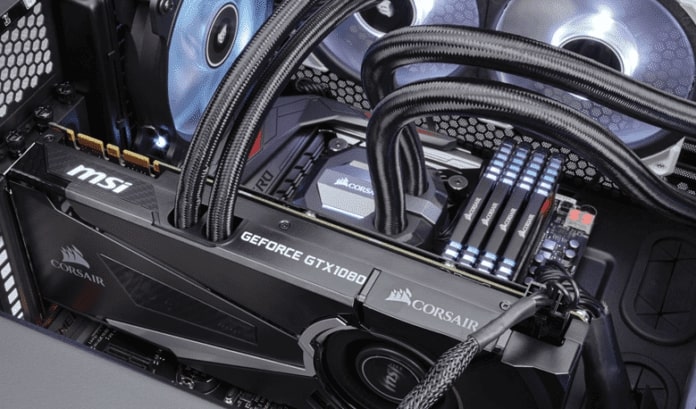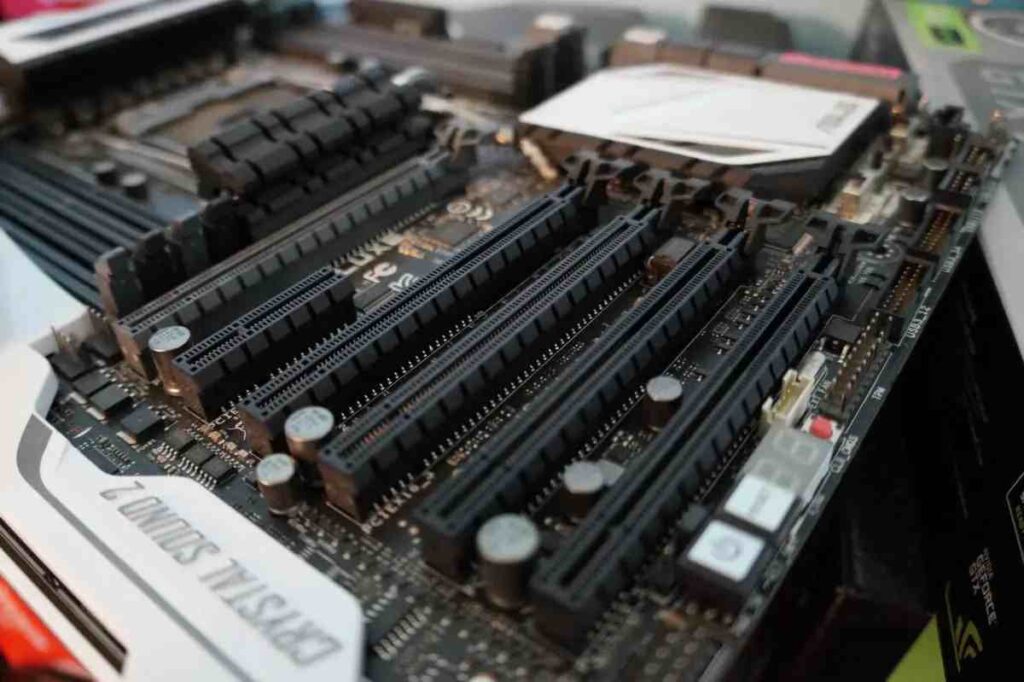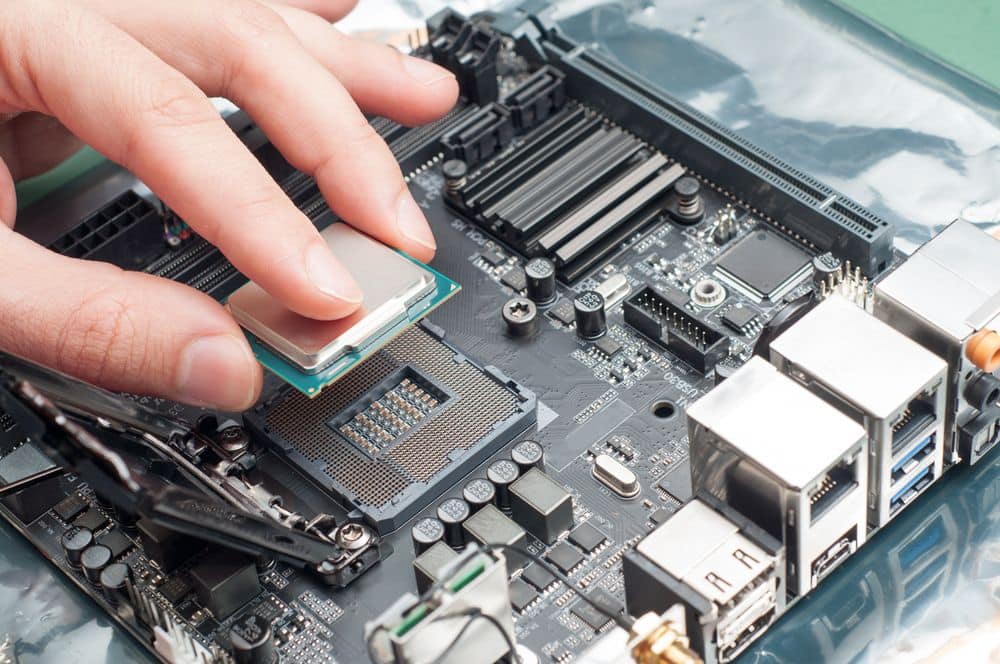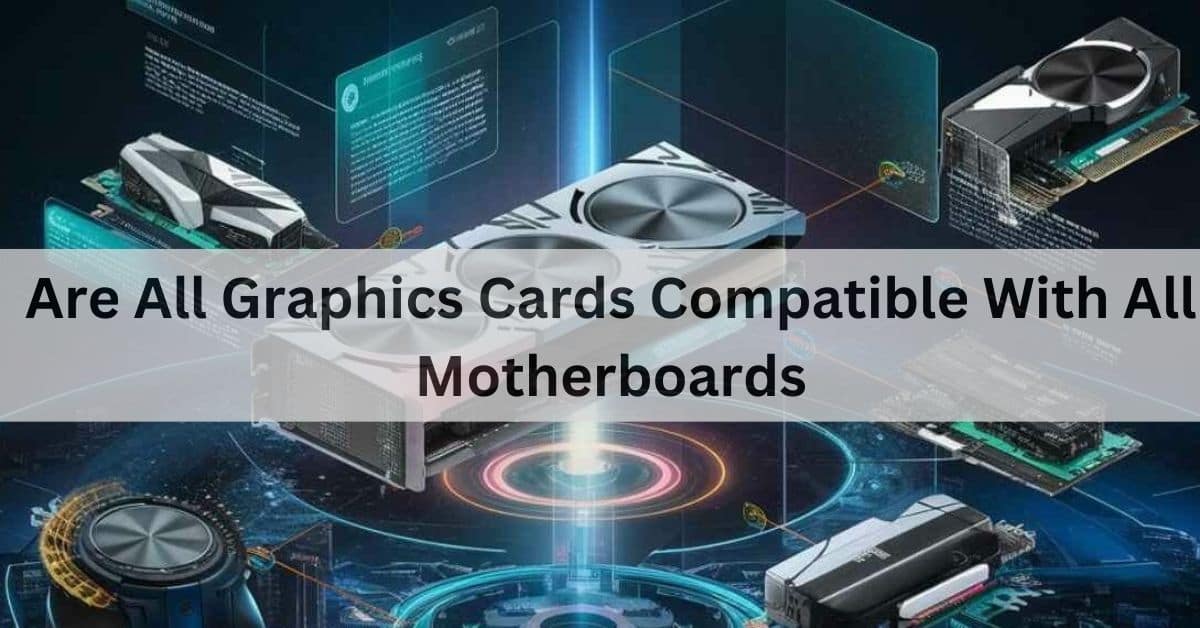Not all graphics cards work with every motherboard. I once bought a new graphics card without checking my motherboard’s slots, and it didn’t fit properly. It’s always smart to double-check compatibility to avoid extra hassle.
Not all graphics cards can work with every motherboard. The graphics card needs to match the motherboard’s slots and power requirements. It’s important to check compatibility before buying to avoid any problems.
In this article, we will discuss “Are All Graphics Cards Compatible With All Motherboards”.
Table of Contents
What are graphics cards compatible?

Graphics cards are compatible if they fit your motherboard’s slot (usually PCIe) and match the power supply requirements. Make sure your case has enough space and your motherboard supports the card’s connection type.
Read More: What Are Motherboard Diag Jumpers Marlin – Everything You Need to Know!
How Can I Check If My Graphics Card Will Work With My Motherboard?
To check if your graphics card works with your motherboard, confirm that the card’s slot type matches the motherboard’s slot. Also, ensure the power supply can support the card and that there’s enough space inside the case.
What Factors Determine Graphics Card Compatibility With a Motherboard?
PCIe Slot Availability:
PCIe slot availability refers to how many PCIe slots are open on a motherboard. These slots are needed to connect parts like graphics cards. Always check if your motherboard has enough slots for your needs.
Power Supply Compatibility:
Power supply compatibility means making sure the power supply fits your computer’s needs. It should have the right connections and enough power for your parts, like the motherboard, graphics card, and other devices.
Physical Size (Form Factor):
The physical size, or form factor, of a graphics card matters because it needs to fit inside your computer case. Make sure your case has enough space for the card’s length, width, and height.
BIOS Support:
BIOS support means that the motherboard’s software can work with different hardware parts. It helps the computer start up and recognize new devices, like storage drives or memory, ensuring everything runs smoothly.
Will a PCIe Slot Version Affect the Performance of a Graphics Card?
Bandwidth Limitations:
Bandwidth limitations refer to the maximum amount of data that can be transferred over a network. This can slow down internet speed and affect online activities like streaming, gaming, or video calls if exceeded.
Latency:
Latency is the delay between a command and the response. In computers, lower latency means faster reactions, making tasks run more smoothly. It’s important for gaming and real-time applications to ensure a good experience.
Power Delivery:
Power Delivery is a technology that helps charge devices faster and provide more power through a USB connection. It ensures devices can get the right amount of energy they need to work well.
Compatibility with Other Components:
Compatibility with other components is important for a smooth system. Check if your graphics card, RAM, and CPU can work together with your motherboard. Always verify specifications to ensure everything fits and runs well together.
What Happens If I Install an Incompatible Graphics Card?
If you install an incompatible graphics card, your computer may not start, or it might not recognize the card. This can cause issues like poor performance or even crashes during use. Always check compatibility before installing.
Does my motherboard supports this graphic card?
To find out if your motherboard supports a specific graphics card, check the motherboard’s manual or website. Look for the card’s slot type and compatibility information to ensure they match.
How do I know if my graphics card is compatible with my motherboard?
To check if your graphics card is compatible with your motherboard, look at the motherboard’s PCIe slot type and the card’s size. Also, check the power supply requirements to ensure they match.
Will all GPUs work with all motherboards?
No, not all GPUs work with every motherboard. Compatibility depends on the motherboard’s slots, size, and power supply. Always check specifications to ensure the GPU will fit and function properly with your motherboard.
Can you put any graphics card into your motherboard?

You cannot put any graphics card into your motherboard. Each motherboard has specific slots and compatibility requirements. Always check if your motherboard supports the graphics card before making a purchase to avoid problems.
Read More: New Motherboard Wifi Not Working – Discover How To Solve Them Fast!
Does every graphic card fit in every computer?
No, not every graphic card fits in every computer. Each card needs the right slot and power supply. Always check your motherboard specifications to make sure the graphic card is compatible before buying.
Motherboard/CPU and GPU compatibility?
Are All Graphics Cards Compatible With All Motherboards, CPU, and GPU compatibility is important for a working computer. Always check if your motherboard supports your CPU and GPU before buying. Using compatible parts ensures better performance and avoids problems during setup.
Graphics card and motherboard compatibility?
Graphics card and motherboard compatibility is important. Not all graphics cards fit every motherboard. Check the size, slot type, and power needs before buying to ensure they work well together and avoid problems.
Are Older Motherboards Compatible With Newer Graphics Cards?
Older Are All Graphics Cards Compatible With All Motherboards may not work with newer graphics cards. Many new cards need specific slots or power connectors that older motherboards don’t have. Always check the compatibility before buying a new graphics card.
What GPU can my motherboard support?
To find out what GPU your motherboard can support, check the motherboard manual or website. Look for details about the PCIe slot type and size, which will tell you compatible graphics card options.
Motherboard/GPU compatibility:
Motherboard and GPU compatibility is important. Not all GPUs fit all motherboards due to different slots and sizes. Always check your motherboard specifications to ensure a good match for your graphics card.
Graphics card and motherboard compatibility?
Graphics card and Are All Graphics Cards Compatible With All Motherboards is important for a working PC. Always check the motherboard slots and specifications before buying a graphics card to ensure they fit and work together correctly. This helps avoid problems later.
Will my motherboard support any graphics card?
Not all motherboards support every graphics card. You need to check the Are All Graphics Cards Compatible With All Motherboards’s slot type and specifications to ensure the graphics card will fit and work properly. Always verify compatibility before buying.
Are all graphics cards compatible with all motherboards nvidia?
Not all Nvidia graphics cards work with every Are All Graphics Cards Compatible With All Motherboards. Compatibility depends on the motherboard’s slots and features. Always check the specifications of both the card and motherboard before making a purchase.
NVIDIA graphics card compatibility check?
To check NVIDIA graphics card compatibility, ensure your Are All Graphics Cards Compatible With All Motherboards has the correct PCIe slot. Also, confirm that your power supply can support the card and that it fits in your computer case.
Can GPU not be compatible with motherboard?
Yes, a GPU can be incompatible with a Are All Graphics Cards Compatible With All Motherboards. This happens when the slots do not match, or the motherboard lacks the necessary power connections. Always check compatibility before buying a new GPU.
Motherboard graphics card compatibility checker online?
You can use an online motherboard and graphics card compatibility checker to see if your graphics card fits your motherboard. Just enter your motherboard model and graphics card details for quick results.
Can any motherboard support any CPU?

No, not every motherboard can support any CPU. Each motherboard has specific sockets and designs that work with certain CPUs. Always check the motherboard specifications to ensure compatibility before buying a new CPU.
Read More: What Are Power Stages On A Motherboard – What You Need To Know!
ASUS motherboard GPU compatibility?
ASUS motherboards are generally compatible with many graphics cards. However, it’s important to check your motherboard’s specifications and ensure the card fits in the slot and has enough power supply for proper performance.
FAQs:
1. What types of graphics cards work with ASUS motherboards?
Most ASUS motherboards support a range of graphics cards, including NVIDIA and AMD models. Always check the motherboard’s specifications for compatibility and required slot types.
2. How do I check if my graphics card is compatible?
To check compatibility, review your motherboard’s manual or specifications online. Ensure that the graphics card fits the PCIe slot and that your power supply can support it.
3. Can I upgrade my graphics card on an ASUS motherboard?
Yes, upgrading your graphics card on an ASUS motherboard is usually simple. Just make sure the new card is compatible with your motherboard and that you have sufficient power.
4. Do I need to update drivers after installing a new graphics card?
Yes, updating drivers after installing a new graphics card is important for optimal performance. Visit the manufacturer’s website for the latest drivers that match your new card.
5. What should I do if my graphics card doesn’t work with my motherboard?
If your graphics card doesn’t work, check if it’s properly seated in the slot. Ensure all power connections are secure and consider testing the card in another system to rule out issues.
Conclusion:
Ensuring compatibility between your ASUS motherboard and graphics card is crucial for optimal performance. Always verify specifications and requirements before making a purchase. Taking these steps can save you time and prevent potential issues. Regularly updating your drivers will also enhance your graphics experience. By staying informed, you can enjoy the best performance from your system.
